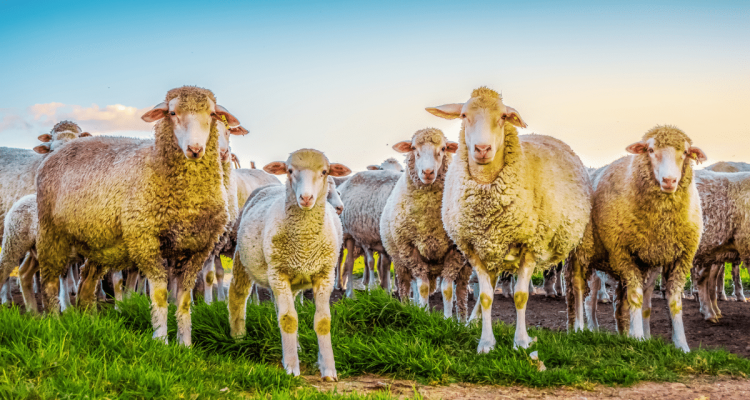Merino wool is a natural fiber that is soft, moisture-wicking, and breathable. But did you know it’s also crazy warm? Like one of the warmest natural fibers on the planet!
In fact, Merino wool is so warm that it’s often used in high-performance outdoor clothing for mountaineering, skiing, and other cold-weather activities. But it’s not just for extreme sports enthusiasts. Merino wool can also be an excellent choice for everyday wear, especially in cold climates.
And today, you’ll find out why Merino wool is one of the warmest fabrics. So, without further ado, let’s dig deep to answer the question: Is Merino wool warm?
Disclosure: Merino Wool Gear DOES NOT sponsor products to maintain our genuineness and authenticity. However, as an affiliate member, we may earn a small commission from qualifying purchases.
How Does Merino Wool Keep You Warm?
You have to understand that Merino sheep live outside all year round. So, their fleeces protect them from harsh conditions when wintertime rolls around. And in the spring, when their wool is shorn and eventually processed into clothing, you get all the same benefits.
Let’s look closer into why Merino wool is so warm.
Heat of Sorption
In the case of Merino wool, the heat of sorption is positive, meaning that heat is released when the wool absorbs moisture. This is due to the chemical structure of wool, which contains amino acids that form hydrogen bonds with water molecules. When the wool absorbs moisture, these hydrogen bonds break, releasing heat.
So, in the winter, Merino wool will keep you warm even if you’re sweating. It’s one of its many natural properties, which we absolutely love.
Fine Fibers
Merino wool fibers are super fine, with an average diameter of about 17 micrometers or microns. This means they have a high surface area to volume ratio, which allows them to trap more air. Air is a good insulator, so this helps to keep you warm.
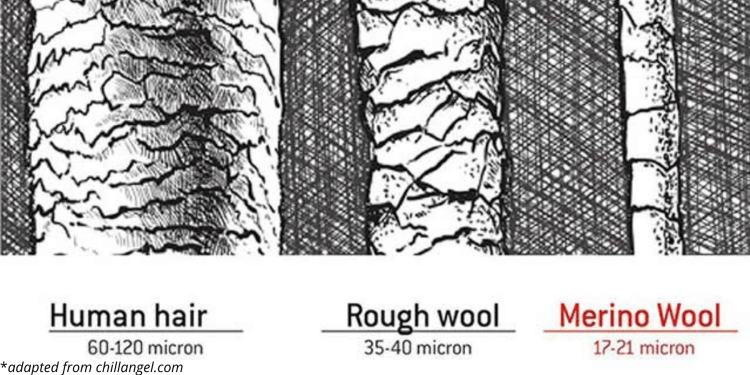
And it’s easier to gauge how fine these fibers are if you have something to compare them to. As you can see from the above comparison, Merino wool is much thinner than regular wool, and it’s almost four times finer than human hair.
Now that’s a fine, fine fiber.
Natural Crimp & Elasticity
If you took a magnifying glass to Merino wool fibers, you’d see a wavy, curly shape that is not smooth. This natural spring-like crimp helps trap warm air pockets in the material, insulating you from the outside conditions.
In other words, Merino wool’s structure makes you warm!
Due to this crimp, wool fibers are naturally elastic; they can stretch and contract without breaking. This is important because it helps to keep the fibers from bunching up, which would trap less air and make you less warm.
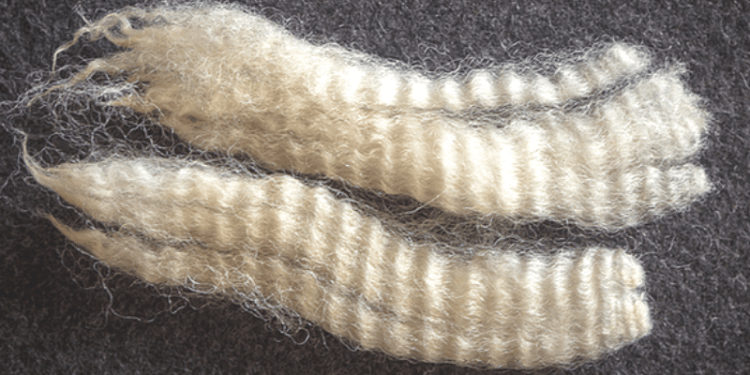
Hollow Core
Compared to solid fibers like synthetics, Merino wool fibers are hollow, which can trap even more air. In fact, Merino wool can trap up to 80% of its weight in air. And this allows for a fantastic warmth-to-weight ratio.

Combining fine fibers, natural crimp, hollow core, and elastic fibers gives Merino wool superior warmth retention properties. The fine fibers trap air, the crimp creates tiny air pockets, the hollow body further increases the amount of air that can be trapped, and the elastic fibers help to keep the air evenly distributed. This air acts as an insulator, preventing heat from escaping from your body.
So, is Merino wool warm? The answer is simple: you’re damn right it is!
How Does Merino Wool Keep You Cool?
I told you you didn’t know the half of it!
In addition to keeping you warm in the chilly months, Merino wool does an excellent job keeping you cool in the summer. Again, the sheep have to stay cool in the sun somehow!
And this isn’t just hearsay because I’m a Merino wool lover – it’s the truth! Merino wool has many natural properties – like breathability, moisture management, and odor resistance – making it one of the best summer fabrics.
Let’s examine why Merino wool is excellent at regulating your body temperature.
Moisture Management
Due to their hollow structure, Merino wool fibers absorb and transport moisture away from your skin. Not only does it help draw sweat beads away from your skin, but it also moves water vapor away from your skin as sweat evaporates. Therefore, your next-to-skin microclimate always stays dry.
So, if you’re rocking your Merino clothing in hot weather, you shouldn’t feel hot or clammy!
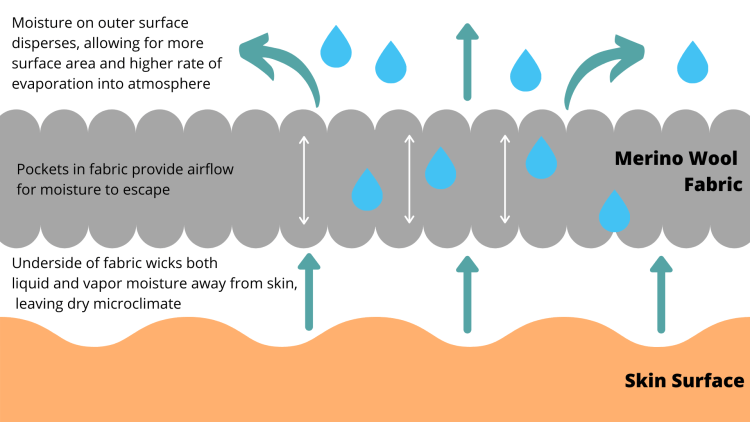
Breathability
Breathability is often just a buzzword in the athletic wear world, but with Merino wool, it’s actually a thing. You get tons of airflow through the material, preventing your body temperature – especially around your core – from overheating.
Here is a more scientific explanation of how Merino wool is breathable:
- The hollow fibers of Merino wool are about the same size as a water vapor molecule. This allows water vapor to move quickly through the fabric, wicking away moisture from the skin.
- Merino Wool’s Crimp is the natural wave-like pattern of the fibers. This crimp creates tiny air pockets between the fibers, which further helps to trap air and wick away moisture.
- The scales on Merino wool fibers are microscopic projections overlapping like fish scales. These scales help to keep the threads from felting together, which would block the airflow.
Natural Odor Resistance
Merino wool is naturally odor-resistant, meaning you can wear it for days without it getting smelly. This is great for hot weather when you might not be able to wash your clothes as often and contributes to Merino wool’s industry-leading sustainability. Less washing, less water, less microplastics, and better for the environment!

In addition to these properties, Merino wool has a unique ability to absorb and release heat slowly (part of what we discussed with Heat of Sorption).
So, if you’re looking for a fabric that can keep you warm in cold weather and cool in hot weather, merino wool is a great choice. It’s no wonder why Merino wool is so desired by outdoor enthusiasts and everyday wearers alike.
Is Merino Wool Warm? Scientific Evidence
It may sound more subjective coming from a guy who eats, sleeps, and breathes Merino wool gear, but there is hard scientific evidence from people much smarter than me that gives the overwhelming answer of “Yes. Merino wool is warm!“
In one study, researchers found that Merino wool could keep people warm in temperatures as low as -20 °C. In another study, researchers found that Merino wool could wick away moisture twice as fast as cotton.
And, while I could sit here and science nerd out all day, I decided to give you the Cliff notes of some other fascinating studies pondering the warmth of Merino wool.
- The impact of sleepwear fiber type on sleep quality under warm ambient conditions
- Effects of Merino Wool on Atopic Dermatitis Using Clinical, Quality of Life, and Physiological Outcome Measures
- Improving thermal conductivities of textile materials by nanohybrid approaches
- Effect of local cooling on sweating rate and cold sensation
- Effects of two different battings (sheep wool versus polyester microfiber) in an outdoor jacket on the heat and moisture management and comfort sensation in the cold
Merino Wool Vs. Other Natural Fibers
I’ll always choose Merino wool over other natural fibers, such as cotton, silk, and linen. However,. All these fibers have unique properties, and the best fiber for you will depend on your individual needs and preferences.
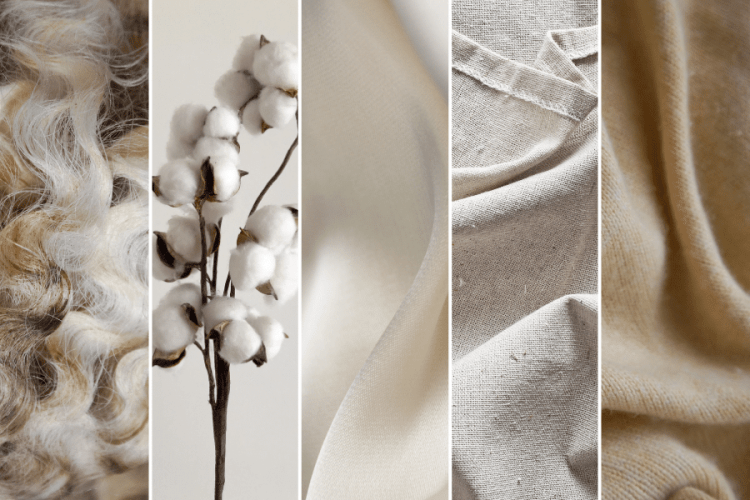
Merino wool is warm, comfortable, wicks away moisture, and is naturally odor-resistant. It is also soft and gentle on the skin, durable, long-lasting, and sustainable. However, it can be itchy for some people and not as wrinkle-resistant as other fibers.
Cotton is affordable, soft, comfortable, breathable, and absorbent. However, it is not as warm as Merino wool, can get clammy when wet, and is not as odor-resistant.
Silk is soft, luxurious, relaxed, comfortable, moisture-wicking, and naturally wrinkle-resistant. However, it is expensive, less durable than merino wool, and can be damaged by heat and sunlight.
Linen is cool and comfortable, breathable, and absorbent. However, it is heavier than Merino wool, can wrinkle easily, and is less soft than other fibers.
Cashmere, alpaca, and other animal-based fibers often compete with Merino wool clothing. Cashmere is a little more luxurious but not as durable, and alpaca fibers are super warm but – at least from my experience – not as soft.
Ultimately, the best fiber for you will depend on your individual needs and preferences. Merino wool is an excellent option if you are looking for a warm, comfortable, and versatile fabric that can be worn in various climates. For something ultra-luxurious, why not cashmere or alpaca. However, if you are on a budget or looking for a more wrinkle-resistant fiber, cotton or linen may be a better choice.
Final Note: Is Merino Wool Warm?
Merino wool is a remarkable fabric with many benefits, making it an excellent choice for cold-weather clothing. It is warm, comfortable, wicks away moisture, and is naturally odor-resistant. It is also soft and gentle on the skin, durable, long-lasting, and sustainable.
So next time you are looking for a new winter jacket or sweater, consider Merino wool. You won’t be disappointed!
Here are some additional things to keep in mind when choosing Merino wool clothing:
Quality: As a natural fiber, fabric quality will vary depending on the brand and the price. Buying Merino wool clothing from a reputable brand that uses high-quality wool is essential.
Thickness: Merino wool comes in different thicknesses, so choosing the right consistency for your climate is necessary. You will want thicker merino wool clothing (200+ gsm) for cold weather. You can choose a lighter weight (<150 gsm) for warmer weather.
Care instructions: Merino wool is easy to care for. It can be machine-washed and dried on a low setting. However, following the care instructions on the garment tag is vital to avoid shrinking or fading.
I hope this helps you to choose the perfect Merino wool clothing for your needs! And if you want to learn more about our favorite fabric, follow us on the socials below, or sign up for our newsletter.
We’re always looking for new Merino lovers to join our flock!

